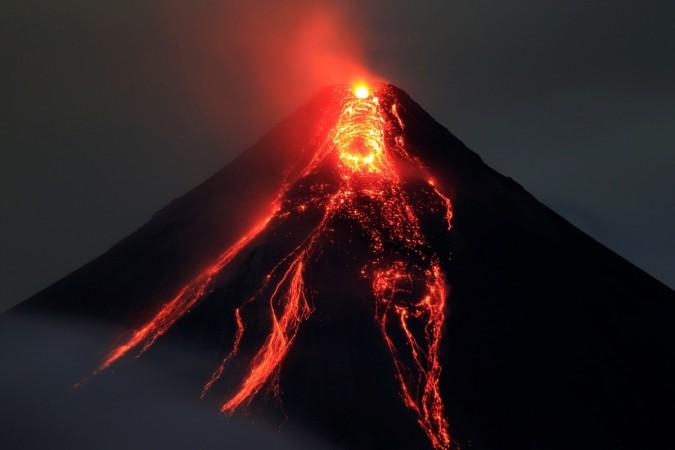
- Mount Toba had erupted about 74,000 years ago.
- The explosion had covered all of South Asia in ash, blocked sunlight and stagnated growth.
- Recently discovered African fossils contained rock shards from the same explosion.
- Remnants of human activity showed not all life had been wiped off.
About 74,000 years ago, a super-volcano in Sumatra erupted with consequences that were close to an apocalypse. Most experts were under the impression that this 'volcanic winter' had managed to nearly wipe out humankind; but the recent discovery of fossils excavated from African soil, about 5,600 miles away from the scene of this catastrophe, prove otherwise.
The eruption of the Mount Toba – a caldera along the lines of the modern-day Indonesian island – had managed to blanket all of South Asia with ash, blocked out the sun and even choked the growth of vegetation in the region.
This posed an immediate threat to the existence of the section of the human population that relied on wildlife for their survival. Life, however, found a way believes a group of scientists, who claim that a resilient group of people made it through, all the way in Africa, where glass shards released from the explosion had managed to reach.
While certain scientists are still sceptical, this new research provides sufficient support to prove that the effects of the super volcano's eruption were, in fact, widespread enough to span the Indian Ocean.

But, in the years following the eruption, human life continued to grow along this affected belt too. Human activity seemed to have increased upon the southern tip of Africa, leading scientists to believe that a certain group of humans actually survived the Volcanic Winter that had threatened the entire race.
This conclusion was based on the discovery of tephra – rock shards ejected by the volcano. Glass tephra was found in two dig sites on the south coast of South Africa. Incidentally enough, this was at the same level as remnants of human activity.
These shards were compared to samples around the Toba and it was discovered that the two were from the same explosion. Gene Smith, professor emeritus of geology at the University of Nevada, Las Vegas, and lead author of the study, supervised the chemical analysis of both the samples.
"Glass shards are a form of tephra that preserve a record of the chemical composition of the lava erupted during the eruption. The shapes and sizes of the shards also provide information about the nature of the eruption," Smith shared with Inverse. "We can tell quite a bit about a volcanic eruption by studying products ejected from the volcano."

Researchers involved in the study suggested that coastal resources were relatively less affected by the explosion's disastrous aftermath, than that of the resources found further inland.
But the evidence of human life along that belt doesn't show just basic survival: human activity actually increased there, which can be attributed to groups of people moving to the coastal regions after the inland areas were suffering stagnated wildlife from the volcanic winter.
"It is possible that people moved out of terrestrial locations and into this more productive coastal zone," Curtis Marean, Ph.D., professor of archaeology at Arizona State University and one of the study's authors shared with Inverse. "Think of it as a refuge."
But much like those experts who aren't so convinced about the theory of humans surviving the volcanic winter, certain scientists believe the global consequences of the Mount Toba explosion weren't all that catastrophic, to begin with.
"Some big events like Toba happen to be obvious to us in geology," John Hawks, an anthropologist at the University of Wisconsin, Madison, shared with Gizmodo. "But they were actually fairly small in the scheme of things. Hominin [people of the Homini tribe from Africa] populations were resilient and able to adapt to the kind of small-scale climate changes caused by eruptions."

Surprisingly enough, despite our ancestors having not just survived, but flourished after the almost-apocalyptic instance, Smith believes if something similar were to happen in modern times, we couldn't expect the same aftermath in terms of human life.
"Hunter-gatherer economies are very resilient, but I don't think the complex modern economies are," he says. "A Toba-like event is a civilization killer for us. Perhaps our study will waken people up to the potential of volcanic catastrophe."
The study was published in the journal, Nature.








![Deepika Padukone–Ranveer Singh smooch, enjoy NBA date night in New York [Watch]](https://data1.ibtimes.co.in/en/full/826707/deepika-padukoneranveer-singh-smooch-enjoy-nba-date-night-new-york-watch.jpg?w=220&h=138)



